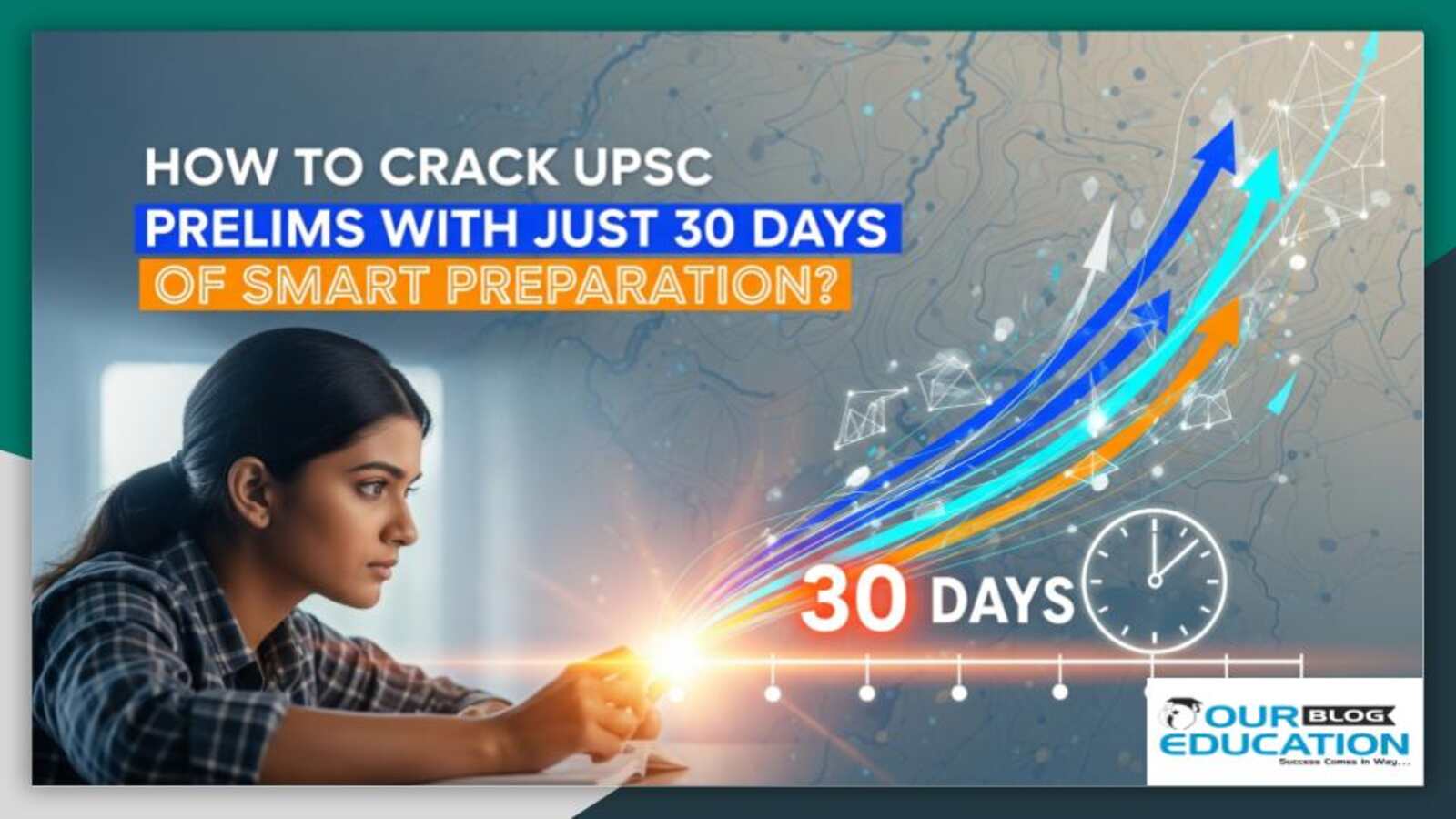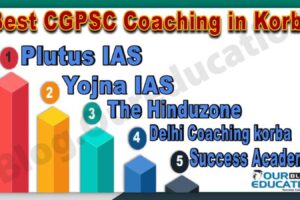
How to Crack UPSC Prelims with Just 30 Days of Smart Preparation?
Crack UPSC Prelims: Commonly termed an almost insurmountable barrier that requires months or even years of meticulous preparation, the UPSC Civil Services Preliminary Examination is well-known. However, though ideally a long process, life may often throw other curve balls, or there may be some sudden surge of inspiration to get a month’s preparation done for an aspirant wanting to crack UPSC Prelims. Is it possible? Yes, but that is if the candidate exceptionally smartly organizes their preparation, stays sharply focused, and follows a disciplined schedule. This piece unfolds a high-intensity and timely result-oriented plan that could give the most to the limited time, especially when time matters so much in cracking UPSC Prelims.
The 30-Day Blueprint: High-Intensity Approach
The success of this crucial 30-day period is not about covering the whole syllabus- immense that it is- but about outsmarting the exam block by hitting high-yield areas, coupled with good revision.
Week 1: Shouldering Strong Foundations and High-Yield Areas (Seven Days)
The first week is of rapid review and scoping out your battleground.
Syllabus and PYQ Analysis (Days 1-2):
For the first two days, you should mindfully go over the UPSC Prelims syllabus and the past 5-7 years’ Previous Year Question Papers. Do not just read through them. Rather, try to find common themes, the subjects that seem to carry the most weight, and the types of questions that tend to be asked. Keep track of trending topics in Polity, Economy, Environment, and Current Affairs. This strategic mapping is essential for cracking the UPSC Prelims.
Static Subjects Power-Revision (Days 3-7):
- Polity: From M. Laxmikanth, focus only on core chapters like Fundamental Rights, DPSP, Parliament, President, Judiciary, and Local Governments. They have always been high scorers.
- Economy: Focus on macroeconomics, banking, inflation, government schemes-especially recent ones-and important economic reports.
- Environment: Focus on biodiversity, climate change, protected areas, and international conventions. While doing so, use Shankar IAS or similar short notes.
- History: Skim through Modern Indian History (especially the freedom struggle) and Art & Culture (basic facts, architectural styles, classical dances/music). Avoid delving deep into ancient/medieval unless it’s a strong area.
- Daily Current Affairs (1 hour): Dedicate a fixed slot to daily current affairs. Focus on summaries of the past 6-8 months from reliable sources.
Week 2-Deep Dive into Dynamic & Practice (Days 8-14)
The week is geared towards consolidating current affairs and beginning intensive practice.
Current Affairs Consolidation (Days 8-10):
A few days are to be reserved for a whirlwind revision of monthly compilations for the last 12 months, paying special attention to events of the past six months. Focus on government schemes, international relations, awards, and major reports. This is crucial for clearing UPSC Prelims within a short period.
Science & Tech (Day 11):
Indian applied science and recent developments (such as space technology, biotechnology, IT), and health-related current affairs should be the prime concern. Do not delve into the higher-level scientific principles.
Geography (Day 12):
Indian Geography (physical features, climate, agriculture, resources) and World Map (important locations-namely major rivers, mountains, straits)-should be the focus.
CSAT Practice (Days 13-14):
Give full days to CSAT (General Studies Paper II) practice sessions. Practice comprehension passages, logical reasoning, and basic numeracy. The goal is to reach the qualifying marks. Do not ignore CSAT; otherwise, many worthy candidates face downfall.
Week 3: Mock Tests & Weakness Rectification (Days 15-21)
It is made of self-assessment and improvements.
- Full-Length Mock Tests (Days 15, 17, 19, 21): Give at least four full-length GS Paper I mock tests within 2 hours, accepting these to have been the real exams.
Detailed Mock Analyses (Days 16, 18, 20): After each mock test, spend a full day analysing your performance.
- Submit queries you missed due to concept errors, wrong facts, or silly errors.
- Revisit the respective topics for those wrong questions from your notes/books.
- Make points for new facts or concepts you learn from the explanation.
- Analyse time management-where did you spend too much time?
- Identify your comfort zone and areas of struggle.
- Take at least one full CSAT mock test on the evening of Day 21 to measure your readiness and identify last-minute areas for touch-up.
Week 4: Intense Revision & Final Touches (Days 22-30)
The last week is meant for cementing the knowledge and building confidence.
Rapid-Fire Revision (Days 22-26):
- Focus on self-prepared crisp notes, books’ highlighted portions, and mock test error log.
- Focus on high-yield topics for revision and on areas of your mistakes.
- Do not begin any new material at this time.
- Fast review of current affairs for an hour in the mornings.
PYQ Revisit (Days 27-28):
- Quickly revisit the PYQs, especially from the last 3-4 years,
- Test yourself for faster and more accurate answers.
Mindfulness & Stress Management (Days 29-30):
- Very light revision.
- Keep an attitude of calm confidence. Attend to light exercise, meditation, or any other outlets you enjoy.
- Ensure proper sleep.
- Refine your exam day strategy: how many questions to attempt and time allocated per section.
Strategic Tips to Crack UPSC Prelims in Thirty Days:
- Prioritise Smartly: All topics are not equal; therefore, one should choose to focus first on high-yield areas.
- Limited Resources: Take your core books and notes to the exam. Avoid any introduction of new material.
- Active Recall: Don’t merely read passively; try to quiz yourself regularly.
- Analysing Mock Tests: The feedback and analysis obtained from mock tests and their solutions bear more value than merely sitting for the test.
- CSAT is an Absolute Must: Sure to comfortably cross the 33% qualifying mark.
- Good health also matters: Having your sleep, diet, and mental well-being in place is a recipe for success.
- Positive Attitude: With fewer days in hand, the applicant will have to keep positive and believe in himself to crack this exam.
The Role of Guidance at Plutus IAS
Well, this 30-day way will have to be executed practically by the applicant himself, yet every bit of guidance can help. Institutes like Plutus IAS are very much aware of how UPSC works. Even in less time, crash courses which are aptly designed, apt mock test series, and insights from expert faculties on high probability questions will be huge in improving the applicant’s focus. Along with helping sift through relevant content and providing a simulated exam environment, such a competent platform would surely give one an edge to crack UPSC Prelims efficiently by max.
Conclusion:
Thrusting oneself to Crack UPSC Prelims preparation with just 30 days is a testament to sheer willpower. It’s a gamble where razor-sharp focus, strategic choice, and unshakeable discipline are your biggest allies. A tall order, but if you can work through with a rigid and smart study plan, practice prioritisation, and maximise the usefulness of practice, your chances of making it through the Prelims to onward determination of becoming a civil servant increase manifold.
Follow the Blogoureducation Channel on WhatsApp
To get the latest updates, connect with the Education YouTube channel
Related article
Easiest optional subject for IAS mains
Requirement of Money for IAS Exam Preparation
Keeping a Positive Mindset while UPSC Preparation
UPSC preparation with private full-time jobs
Know if you are worth preparing for the UPSC
Summary

How to Crack UPSC Prelims with Just 30 Days of Smart Preparation?
Description
This article will provide you the information on How to Crack UPSC Prelims with Just 30 Days of Smart Preparation
Author
Rishutosh
Blog Oureducation
Publisher Logo




